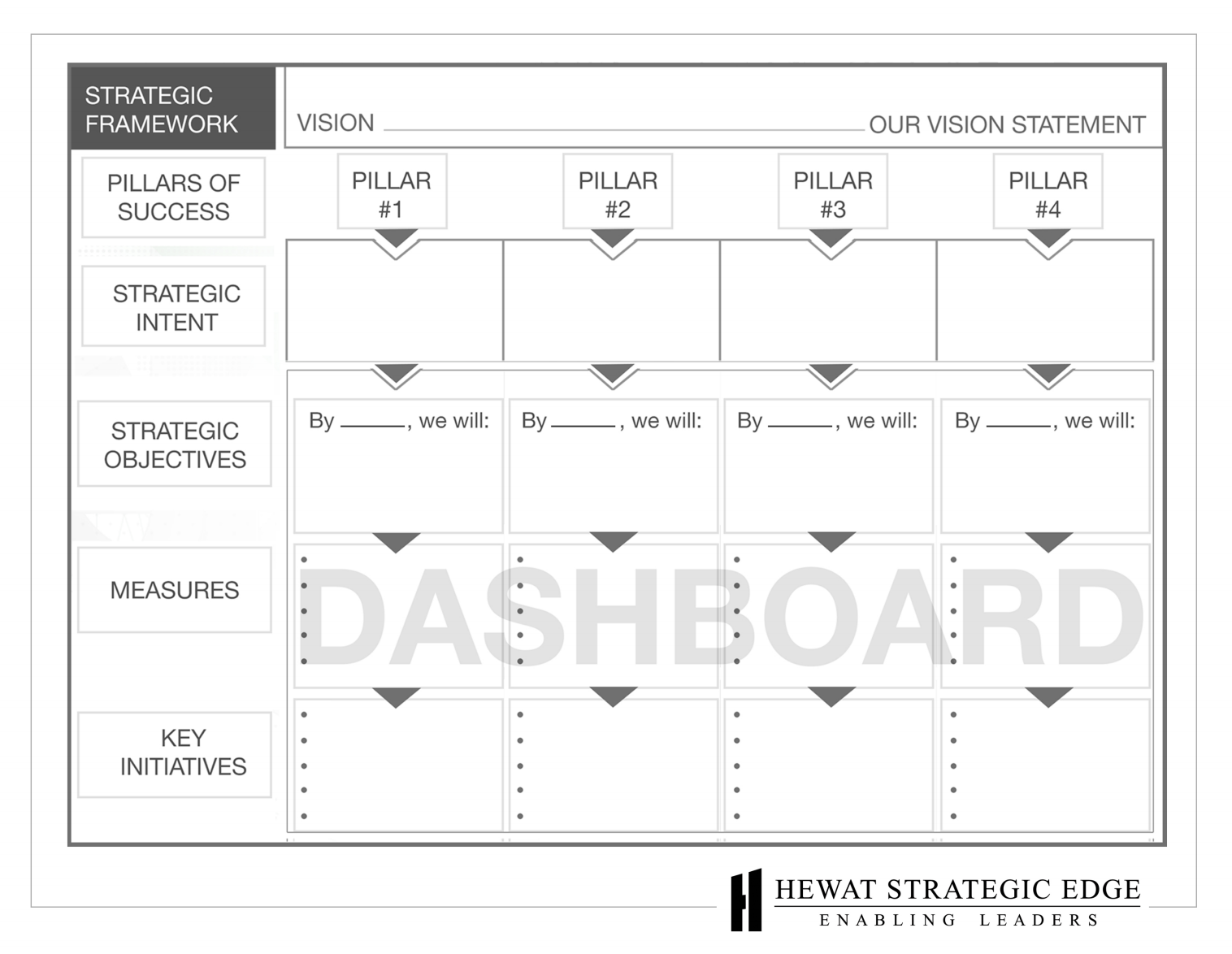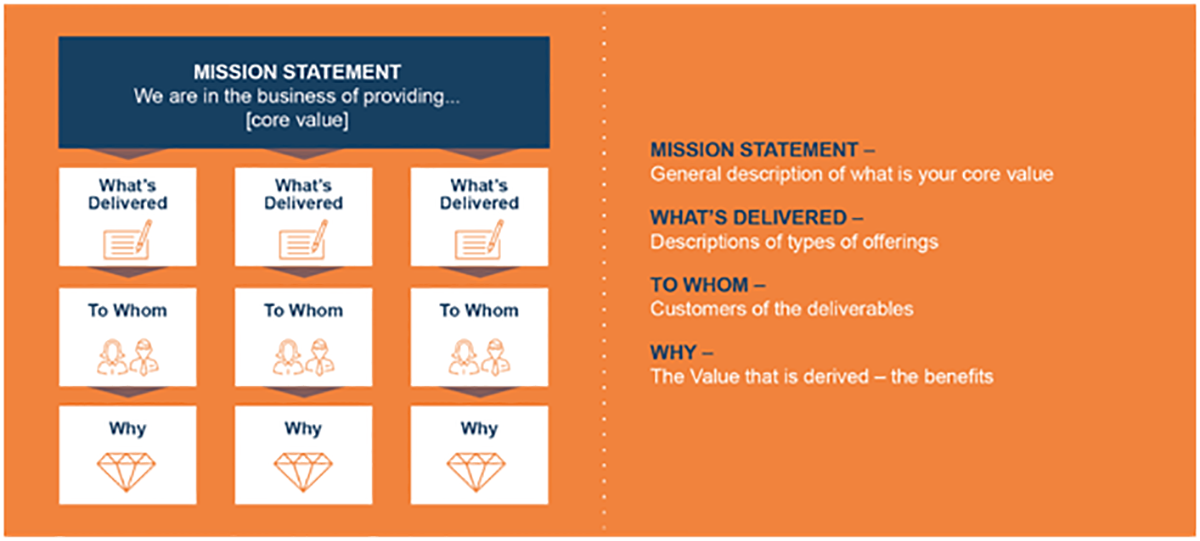Our firm, Hewat Strategic Edge, helps clients build strategic frameworks as part of their strategic planning process. The Strategic Framework always includes a Vision Statement as a guiding element.
I am frequently asked during planning sessions, why they are not focusing on Mission as well as Vision? Part of the answer lies in the difference between the two.
Vision Statement
I describe a Vision Statement as a short, public declaration, of what you want to be able to say is true about your organization, at a certain point in the future. It is short enough to remember. It is a statement that you should be proud to state publicly. It describes specific attributes that may not be present in the organization yet, but they will at a certain point in time.
A Vision Statement on its own is of limited use. But the power of a Vision Statement is exponential when it is tied to other elements of a Strategic Framework, including: Pillars of Success, Strategic Objectives, Measures and Key Initiatives.
Strategic Framework

- Vision Statement
A brief description of your organization of the future - Pillars of Success
The foundation of your organization’s success - Strategic Intent
Clarifies the meaning of each Pillar of Success - Multi-year Objectives
Targets for each Pillar of Success - Measures
– Indicators of achievement- Your dashboard - Key Initiatives
Projects or programs that will drive the achievement of the Strategic Objectives
Building a Strategic Plan or Strategic Framework without a Vision Statement to guide its creation, is reminiscent of the parable of the Blind Men and an Elephant. A group of blind men, who have never come across an elephant before, learn about what an elephant is by touching it. Each blind person feels a different part of the elephant’s body, but only one part, such as the side or the tusk. They then describe the elephant based on their limited experience and their descriptions of the elephant are different from each other. Building a Vision Statement, helps everybody have a commonly understood reference point. It enables a team to agree on the other elements of the strategic framework.
For instructions on how to create a vision statement, follow this botton
Creating Vision Statement Instructions How Do It
Mission Statement
A Mission Statement provides a different form of guidance. An early example that I recall from business school, was the story of the Cunard Lines, which today is a cruise ship business. In earlier times it was a steamship passenger line. At a point in its history, the leadership was examining what business they were in and came to an “aha moment” when they realized they were in the leisure business. One of the outcomes of that realization was to focus on the main decks and less on the power facilities and the engineering aspects of the ship. In other words, focus more on their primary customers – their leisure passengers experiences. This seems so obvious today, given the size of the cruise ship industry, but if they had not come to this early insight they would have been blindsided by their competition.
A Mission Statement should describe the core value the organization provides. A Mission Matrix goes further. It includes the Mission Statement, plus three other elements: what’s delivered, to whom and why?
Mission Matrix

In my experience, fewer organizations are at sea about their mission than they are their Vision. But when they are, it is important to spend the time and get a clear consensus about what business they are in.
Unlike the Strategic Framework, I find as a facilitator, it is easier to start with What’s Delivered, To Whom and Why, before creating the Mission Statement. By doing the other’s first you can conceptualize the Core Value that is being provided much easier.
Should we focus on Vision or Mission? To define want you want to accomplish – focus on Vision. To define what business you are in – focus on Mission. To attempt to do both during the same group process will likely lead to failure. So, pick one and do it well.

